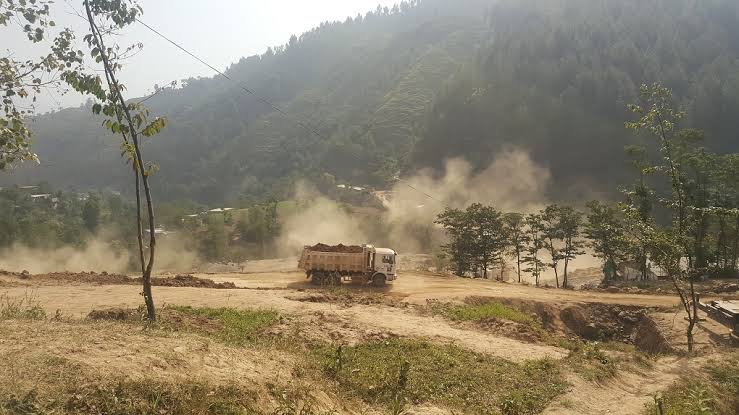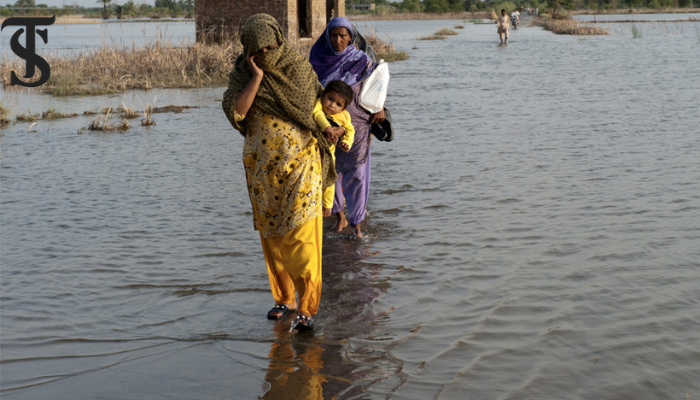Global Warming: A National Security Threat

- Pakistan's severe heatwave has caused significant infrastructure damage, water shortages, and strained the electrical grid, emphasizing the need for treating climate disasters as a national security emergency.
- Climate change has worsened food insecurity and exacerbated tensions over scarce resources, threatening the country's stability and potentially triggering climate-induced migration.
- Effective climate action in Pakistan requires a coordinated, whole-of-government approach, learning from the National Command and Operation Centre (NCOC) model, and sustained cooperation between national and provincial governments.
Pakistan is in the midst of a severe heatwave, with temperatures exceeding 120°F in some regions. April was the hottest month in 61 years, but May brought even warmer temperatures. This extreme heat has caused massive flooding and infrastructure damage, water shortages in Karachi and broader Sindh province, and placed greater demands on the country’s weak electrical grid, reflecting that global warming is a reality.
Pakistan should treat these climate disasters as a national security emergency before they exacerbate conflicts and add stress to the country’s numerous challenges. For the past 20 years, Pakistan has consistently ranked among the top 10 most vulnerable countries on the Climate Risk Index, with 10,000 fatalities due to climate-related disasters and financial losses amounting to about $4 billion from 173 extreme weather events. These challenges threaten to spark climate-related conflict over scarce resources like water. Climate-related disasters can also exacerbate tensions among groups with a history of conflict, posing a serious threat to Pakistan’s stability.
“We are the first generation to feel the effect of climate change and the last generation who can do something about it.”Barack Obama, Former US President
In 2022, heatwave has further worsened food insecurity, damaging orchards and reducing wheat production by 10%, impacting small farmers’ livelihoods and rendering formerly arable land unusable. Already facing wheat shortages due to Russia’s war in Ukraine, Pakistan’s food insecurity undermines peace and stability. During Foreign Minister Bilawal Bhutto Zardari’s visit to the United States for a UN meeting on food security, he highlighted Pakistan’s threats of food, water, and energy insecurity. Combined with soaring inflation and political instability, this situation could trigger climate-induced migration from rural to urban areas, straining already overburdened cities.
Pakistan’s Supreme Court has acknowledged the country’s climate vulnerabilities, emphasizing the need for adaptation, climate resiliency, and sustainability in urban planning. While some local agencies have effectively prepared for climate disasters, others have not. For example, Gilgit Baltistan’s local authorities relocated vulnerable populations before a massive glacial flood, but Karachi’s government failed to adequately resettle those displaced by flood mitigation efforts, leading to protests.
The heatwave prompted the Sindh government to tackle long-standing water mafia issues, highlighting broader natural resource challenges. The heatwave has created an acute water crisis in Sindh, leading to tensions with Punjab. On the international stage, Pakistan participated in COP27 and signed the global methane pledge, seeking international financing for climate commitments. However, the impact on large-scale farmers and workers, who are economically disadvantaged, remains uncertain.

The previous Pakistan Tehreek-e-Insaf (PTI) government made strides in climate mitigation, committing to 60% clean energy and 30% electric vehicles by 2030. Later the former coalition government, led by the Pakistan Muslim League-Nawaz (PML-N), appointed Senator Sherry Rehman as climate change minister, continuing strong leadership on climate issues. However, better coordination between national and provincial governments is needed to address climate impacts effectively.
The PML-N government’s announcement of a climate change task force is a positive step, but an overarching framework is necessary for a coordinated response. Pakistan’s National Command and Operation Centre (NCOC), which led the COVID-19 response, could serve as a model for a climate-focused NCOC. This would ensure sufficient resources and coordination to address climate impacts and implement Pakistan’s commitments under the Paris Accords.
It is unclear if the new climate change task force will be as effective as the COVID-19 NCOC, but learning from its successes and failures is crucial. National and provincial governments must sustain cooperation for long-term climate challenges. The 2022-23 national budget allocated PKR 10 billion ($50 million) to the Ministry of Climate Change, a decrease from the previous year but still showing commitment. The “10 Billion Tree Tsunami” project continues to receive support.
All mainstream political parties in Pakistan recognize that climate change poses a significant threat to the country’s stability. Addressing this requires a “war-footing” and a coordinated, whole-of-government approach. Inadequate or improper action could exacerbate existing issues, leading to increased turmoil and conflict. This unified stance emphasizes the urgent need for comprehensive, collaborative efforts across all levels of government to effectively mitigate and adapt to the impacts of climate change on Pakistan’s socio-economic stability.
The author is the founder of The Spine Times. His areas of interest include terrorism, erstwhile FATA, China, and global politics.







The way you put together the information on your posts is commendable. I would highly recommend this site. You might also want to check my page 71N for some noteworthy inputs about Thai-Massage.
I was suggested this blog by my cousin. I am not sure whether this post is written by him as no one else know such detailed about my problem. You are wonderful! Thanks!